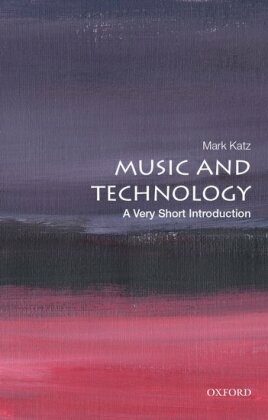Music and Technology - A Very Short Introduction
| Verlag | Oxford University Press |
| Auflage | 2023 |
| Seiten | 160 |
| Format | 11,2 x 0,8 x 17,3 cm |
| Print PDF | |
| Gewicht | 124 g |
| Artikeltyp | Englisches Buch |
| Reihe | Very Short Introduction |
| EAN | 9780199946983 |
| Bestell-Nr | 19994698EA |
Technology does not stand apart from music, influencing it from the outside--it is a part of music, integral to every aspect of musical activity and musical life. "Music technology" tends to evoke images of modernity, but all tools used to create, store, reproduce, and transmit music--new or old, acoustic or electronic--are technologies worthy of investigation. This Very Short Introduction ranges across centuries and continents, reveals surprising connections--between eighteenth century French android musicians and twenty-first century Japanese singing holograms or Baroque pipe organs and music video game controllers. Humans are, and have always been, creatures of technology and of music. If we want to understand how music is made and experienced, Mark Katz argues, we must investigate its relationship--ancient and inextricable--with technology.
Mark Katz surveys the age-old interrelationship between music and technology, from prehistoric musical instruments to today's digital playback devices.
This Very Short Introduction takes an expansive and inclusive approach meant to broaden and challenge traditional views of music and technology. In its most common use, "music technology" tends to evoke images of twentieth and twenty-first century electronic devices: synthesizers, recording equipment, music notation software, and the like. This volume, however, treats all tools used to create, store, reproduce, and transmit music--new or old, electronic or not--as technologies worthy of investigation. All musical instruments can be considered technologies. The modern piano, for example, is a marvel of keys, hammers, strings, pedals, dampers, and jacks; just the sound-producing mechanism, or action, on a piano has more than 50 different parts.
In this broad view, technology in music encompasses instruments, whether ac oustic, electric or electronic; engraving and printing; sound recording and playback; broadcasting; software; and much more. Mark Katz challenges the view that technology is unnatural, something external to music. It was sometimes said in the early twentieth century that so-called mechanical music (especially player pianos and phonographs) was a menace to "real" music; alternatively, technology can be freighted with utopian hopes and desires, as happens today with music streaming platforms like Spotify. Positive or negative, these views assume that technology is something that acts upon music; by contrast, this volume characterizes technology as an integral part of all musical activity and portrays traditional instruments and electronic machines as equally technological.
Inhaltsverzeichnis:
1. Music as Technology
2. The Body
3. Time
4. Space
5. Community
6. Noise
7. Five Theses about Music and Technology
References
Further Reading
Index

